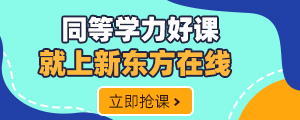Want a glimpse of the future of health care? Take a look at the way the various networks of people involved in patient care are being connected to one another , and how this new connectivity is being exploited to deliver medicine to the patient — no matter where he or she may be .
Online doctors offering advice based on standardized symptoms are the most obvious example . Increasingly , however , remote diagnosis (telemedicine) will be based on real physiological data from the actual patient . A group from the University of Kentucky has shown that by using an off-the-shelf (现成的) PDA (personal data assistance) such as a Palm Pilot plus a mobile phone , it is perfectly feasible to transmit a patient's vital signs over the telephone . With this kind of equipment in a first-aid kit (急救包 ) , the cry asking whether there was a doctor in the house could well be a thing of the past .
Other medical technology groups are working on applying telemedicine to rural care . And at least one team wants to use telemedicine as a tool for disaster response — especially after earthquakes . Overall , the trend is towards providing global access to medical data and expertise .
But there is one problem . Bandwidth is the limiting factor for transmitting complex medical images around the world — CT scans being one of the biggest bandwidth consumers . Communications satellites may be able to cope with the short-term needs during disasters such as earthquakes , wars or famines . But medicine is looking towards both the second-generation Internet and third-generation mobile phones for the future of distributed medical intelligence .
Doctors have met to discuss computer-based tools for medical diagnosis , training and telemedicine . With the falling price of broadband communications , the new technologies should usher in (迎来) an era when telemedicine and the sharing of medical information , expert opinion and diagnosis are common .
1 . The basis of remote diagnosis will be .
A . standardized symptoms of a patient B . personal data assistance
C . transmitted complex medical images D . real physiological data from a patient
2 . The sentence “the cry asking whether there was a doctor in the house could well be a thing of the past” means .
A . now people probably would not ask if there is a doctor in the house
B . patients used to cry and ask if there was a doctor in the house
C . in the past people often cried and asked if there was a doctor in the house
D . patients are now still asking if there is a doctor in the house
3 . All the following statements are true EXCEPT that .
A . it is now feasible to transmit a patient's vital signs over telephone
B . flood is not among the disasters mentioned in the passage
C . the trend in applying telemedicine is toward providing global access to medical data
D . telemedicine is being used by many medical teams as a tool for disaster response
4 . The word “problem” in the fourth paragraph refers to the fact that .
A . there are not enough mobile phones for distributing medical intelligence
B . CT scans are one of the biggest bandwidth consumers
C . bandwidth is not adequate to transmit complex medical images around the world
D . communications satellites can only cope with the short-term needs during disasters
5 . A proper title for the passage may be .
A . Improvement in Communications B . The Online Doctor Is In
C . Application of Telemedicine D . How to Make Remote Diagnosis
参考答案:
1 . D 。
2 . A 。
3 . D 。
4 . C 。
5 . B 。
 推荐阅读
推荐阅读
1 略读 粗略地阅读语言材料的面式阅读法,通过略读获取阅读材料的主要内容和大意。快速阅读时,训练学生略读文章标题判断预测主要内
一、紧扣主题,中心鲜明 紧扣主题是重中之重,是整个作文的主线,如果偏离主题的话即使再好的修饰,再好的语句结构,最多给你一个安
1 Practice makes perfect 熟能生巧。 2 God helps those who help themselves 天助自助者。 3 Easier said than
take a the chance 冒风险;碰运气 take after与……相像 take apart拆开;剖析;粗暴对待 take care小心,当心; take
关系代词(在句中作主语、宾语或定语) 1 that既可代表事物也可代表人,which代表事物;它们在从句中作主语或宾语,that在从句中作宾


 阅读排行榜
阅读排行榜
 相关内容
相关内容